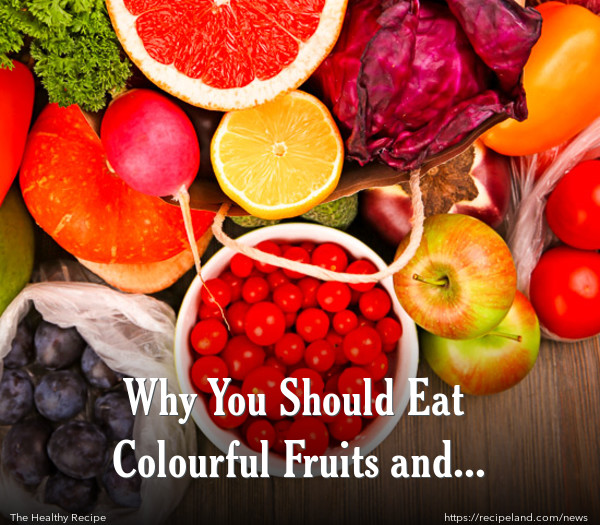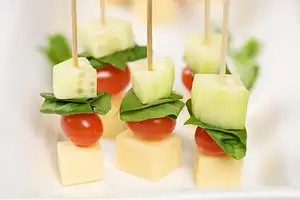Fruits and vegetables are an inexpensive and natural source of vital nutrition. The colours of fruits and veggies tell us what phytonutrients they contain and entice us to eat them. Plants create these powerful phytonutrients to block damage from sunlight, disease, pollution, and harsh temperatures.
As Dr. James A. Joseph of the U.S. Department of Agriculture’s Human Nutrition Research Centre on Aging at Tufts University in Boston points out, plants aren’t able to protect themselves from the environment with sunscreen. They have to generate their own protection through anti-inflammatory and antioxidant chemicals. These chemicals, or phytonutrients, are what give fruits and vegetables their vibrant colour. As we eat them, we can experience their antioxidant and anti-inflammatory benefits as well!
It is important to eat fruits and vegetables that are a variety of colours. You might have heard the phrase, “eat the rainbow.” Try to eat at least nine servings of colourful fruits and veggies each day.
Orange
Healthy options: Cantaloupe, oranges, mangoes, pumpkin, apricots, carrots, and orange bell pepper.
Packed with immune-supporting beta-carotene, the nutrients in orange fruits and veggies fight off infection and protect your eyesight. They also give you healthy skin and strong bones. Oranges are full of potassium to prevent heart disease.
Yellow
Healthy options: Grapefruit, pineapple, lemons, summer squash, and yellow bell peppers.
These sun-coloured fruits and veggies can prevent acne and other skin related issues. They are also high in vitamin C and vitamin A to give your immune system a boost. Yellow citrus fruits provide limonoids to stop breast, colon, stomach, and skin cancers.
Green
Healthy options: Kale, spinach, escarole, cabbage, broccoli, honeydew, avocados, and kiwi.
Many green vegetables are low in calories, so fill up your plate to lose weight. These veggies are packed with chlorophyll to help prevent cancer and give you strong teeth and bones. Green veggies also have high amounts of lutein and zeaxanthin to lower your risk of developing macular degeneration. Cruciferous green vegetables, such as broccoli and cabbage, protect the body from cancer.
Red
Healthy options: Strawberries, raspberries, cranberries, red grapes, watermelon, tomatoes, radishes, red onion, and red bell peppers.
Red fruits and veggies have the highest levels of lycopene, which is excellent for your skin. Lycopene protects your skin from the sun’s harsh rays. It has also been shown to reduce your risk of developing cancer and heart disease. Red grapes have resveratrol, which can help reduce your risk for heart disease and control the symptoms of asthma and lung disease. Anthocyanins are also found in red fruits and veggies. This powerful antioxidant can strengthen your memory and protect your urinary tract.
Blue
Healthy options: Blueberries
Go foraging for wild blueberries! They are even healthier than their orchard-raised cousins. No matter where they are from, all blueberries are full of powerful antioxidants to reduce inflammation and prevent cancer.
Purple
Healthy options: Blackberries, purple grapes, plums, purple onions, eggplant, and purple cabbage.
Purple fruits provide your body with age-fighting ellagic acid to keep you looking young. Purple fruits and veggies are also full of phenolics and resveratrol to prevent cancer, heart disease, and stroke.
White
Healthy options: Bananas, pears, mushrooms, cauliflower, jicama, onions, and garlic.
Onions and garlic contain allicin to stop the spread of cancer. The anthoxanthins found in white fruits and veggies are also known to lower blood pressure, cut cholesterol levels, and prevent heart disease.










Comments